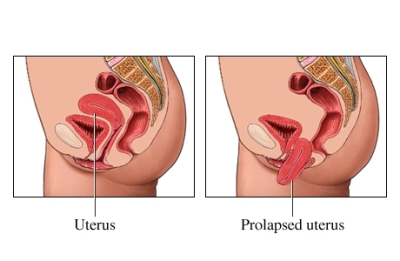Vaginal prolapse or pelvic organ prolapse is a common condition which increases in prevalence with advancing age and a higher number of vaginal births. Due to laxity of or damage to the ligaments and other tissues which keep the pelvic organs in their correct place, structures such as the bladder, uterus and/or bowel protrude into the vagina. This may result in symptoms such as a sensation of a vaginal lump or mass protruding from the vagina, difficulty emptying the bladder, constipation or sexual dysfunction. Though these problems occur in 10% of the population only symptomatic prolapses require treatment.
births. Due to laxity of or damage to the ligaments and other tissues which keep the pelvic organs in their correct place, structures such as the bladder, uterus and/or bowel protrude into the vagina. This may result in symptoms such as a sensation of a vaginal lump or mass protruding from the vagina, difficulty emptying the bladder, constipation or sexual dysfunction. Though these problems occur in 10% of the population only symptomatic prolapses require treatment.
For symptomatic patients who opt not to try a vaginal pessary or for whom this treatment modality has failed, vaginal repair surgery is the best option. If the prolapse involves only the bladder or the bowel, incisions are made over the area of the defect, the underlying supportive tissue is then repaired, reinforced with sutures and the overlying lose tissue is removed and the defect closed. If the prolapse also involves the womb, then a vaginal hysterectomy or laparoscopic assisted vaginal hysterectomy is performed in addition to the aforementioned procedures.
These procedures are generally performed under general or regional (spinal) anaesthesia and the repairs done with absorbable sutures (no removal is required). Typically, most women spend about 2-3 days in the hospital with the catheter in place for 48hours. You will be discharged once you are well and able to pass urine and stool normally. It is advised that you avoid any heavy lifting, strenuous or sexual activity for at 6-12 weeks after the procedure.
If you would like to book a consultation regarding vaginal repair surgery, you can contact us using the link below or directly via or phone contacts.
